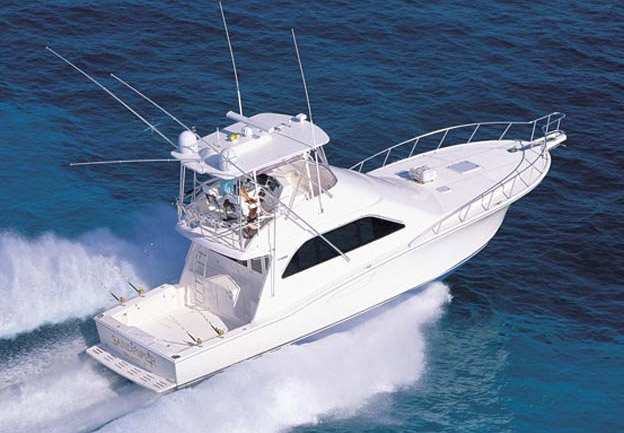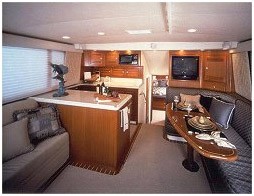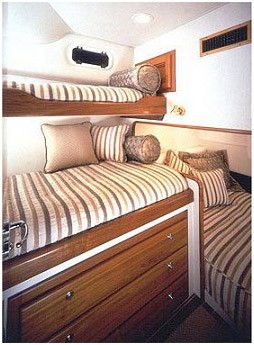- Alaskan Yachts
- Azimut Yachts
- Back Cove Yachts
- Beneteau Yachts
- Benetti Superyachts
- Bertram Yachts
- Boston Whaler
- Broward Yachts
- Buddy Davis Sportfish
- Burger Yachts
- Cabo Yachts
- Catamarans
- Carver Motoryachts
- Center Console
- Chris-Craft Yachts
- Cruisers Yachts
- DeFever Trawlers
- Dufour Sailboats
- Fairline Yachts
- Feadship Yachts
- Ferretti Yachts
- Formula Yachts
- Fountaine Pajot Cats
- Grady-White
- Grand Banks Trawlers
- Hargrave Yachts
- Hatteras Yachts
- Hinckley Picnic Boats
- Horizon Yachts
- Hydra-Sports
- Intrepid Boats
- Jarrett Bay Sportfish
- Jeanneau Yachts
- Kadey-Krogen Trawlers
- Lazzara Yachts
- Luhrs Sportfish
- Marlow Yachts
- Maritimo Yachts
- Marquis Yachts
- McKinna Motoryachts
- Meridian Yachts
- Midnight Express
- MJM Yachts
- Mochi Craft
- Neptunus Motoryachts
- Nordhavn Trawlers
- Nordic Tugs
- Ocean Alexander Yachts
- Offshore Yachts
- Outer Reef
- Oyster Sailing Yachts
- Pacific Mariner Yachts
- Palmer Johnson Yachts
- Pershing Yachts
47 Cabo Flybridge
![]()

Source: staff, Power & Motoryacht Magazine
The Cabo 47 is a traditional yet contemporary convertible sportsfiherman with power and speed. The 47 is well laid out for tournament fishing or long-term cruising, and her interior is unlike many convertibles. Out on the water she proved to be strong 50-footer that delivers a smooth, dry ride even in 30-knot winds.
Fred Smith’s boating career started out like thousands of others. He took to the water at the age of 10 aboard his father’s rowboat, and with pole in hand he set out to see what he could catch. Over the years the boats got bigger, the fishing grounds expanded, and the cruising activities took he and his wife Mary up and down the Intracoastal Waterway between Florida and Annapolis, Maryland, and often times out to the Bahamas. But the big difference between Smith and most other boaters is that he’s been at it for 70 years, and the boats he’s owned were built by some of the great names in wooden boatbuilding—Wheeler and Mathews among them. Even though Smith had a 20-year “stint” with sailing, he returned to the powerboat fold with a 42-foot Uniflite, a 38 Blackfin, and then a 27 Whaler.
If you look at this downsizing trend, you might think this energetic octogenarian was ready to pickup another rowboat and return to his roots. But not Smith. Given he and his wife’s penchant for cruising and fishing the Bahamas, Smith realized he needed to upsize again and in November 1998 purchased his first Cabo, a 35-foot Convertible. Smith says he was impressed with the overall quality and dry ride of the 35, but he needed more room to accommodate guests. So when Doc Austin, president of HMY Yacht Sales in Dania, Florida told him about the new 47 Cabo coming down the ways, Smith was the first buyer in line. And the rest, as they say, is history.
Cabo’s new 47 flybridge sportfisher fit the bill for Smith in a number of ways. In broad strokes, the 47 is a traditional yet contemporary convertible sportfisherman with the power and speed he needs to take his guests (no captain or crew here!) quickly across the Gulfstream and out to the pristine waters of the Abacos. But more than that, the boat has an interior unlike any convertible I’ve seen, and she’s as well laid-out for tournament fishing as she is for long-term cruising.
The 47 is the new flagship of the Cabo fleet, and according to Cabo’s sales manager Greg Borque, the company spent two years developing the final product. “We built a hull and deck with no interior and filled it with 55-gallon drums to create a life-size tank test. We pumped water between the drums, ran the boat, and found the optimum center-of-gravity and horsepower combination. We didn’t go any further until we had this nailed down,” and then Borque says the company finished the job by designing an innovative interior with a watchful eye on weight. The hull bottom is solid FRP, but the hullsides and decks lightweight yet strong with a core-cell foam sandwiched between FRP layers using vacuum-bagging technology. The result is a strong sportfisherman with a 50-foot LOA and a dry weight of just 42,000 pounds.
As a fishboat, the 47 has the usual accoutrements but with several improvements. For example, the seven-foot-long insole fishboxes on either side of the cockpit have split hatches with gas-assist struts so they’re easy to open for smaller fish like dolphin and kingfish. But if you need to boat a big one, the entire hatch assembly is removable. The 50-gallon circulating livewell along the transom is waist-high for easy access, and it’s lit for nighttime use. The cockpit itself has thick bolster padding on all three sides, along with good nonskid decking. Forward and to port, the 47 has a typical console layout with bait-prep center, sink, and freezer next to the centerline engine-room door, but Cabo has eliminated one major headache with its electrical console over to starboard. Here, just beneath a stowage box are all the switches you need to run the cockpit—fresh- and raw-water pumps, livewell pump, cockpit lights, and even macerator pumps for the fishboxes—all in one convenient location and clearly labeled.
Overhead, the flying bridge extension provided some welcome cover for our crew during the rain squalls we had on test day, and the eight-step ladder up to the flying bridge makes it easy for Smith to run up to the helm in about three seconds (I saw him do it!). The helm itself is of the Palm-Beach variety, with centerline pod-style helm and twin ladder-backed pedestal chairs. The single-lever Glendinning controls don’t look like they’re electronic, but they provide smooth positive shifting with mechanical backups if the electronics ever go south. And even though they take a little getting used to upon acceleration since you need both hands to move them forward, you can overcome that by using the engine synchronizer function. Plus, when backing down on a fish there is no better arrangement. The helm is clean, too, with a large electronics console just forward of the dash which eliminates the need for an unsightly overhead electronics box. Just ahead of the helm a benchseat can seat three, along with two more on a fore-and-aft facing lounge for a total of seven guests up top. While the aft position of the helm limits forward visibility from the seated position, you can see the bow pulpit and foredeck from the standing position and there’s no need to move to watch the action in the cockpit—just look down.
When it’s time to turn in for the evening, the salon greets you with a teak-and-holly sole and L-shaped lounge to port diagonally across from an L-shaped dining area for four. The galley is fully equipped with the latest in electronic refrigeration with pull-out refrigerator and freezer drawers by Sub-Zero, and a stowage locker beneath the galley is so large it can easily handle a deflated dinghy and outboard engine. Cabo actually designed the boat so this locker can hold 600 pounds of gear and still run level, but if you don’t stow that much gear, the slight list can be ballasted out of the boat.
For Smith, two separate heads with showers was a priority and he got it on the 47. The guest/dayhead forward and to port is like a master head on many other boats of this size, with fully enclosed shower stall, plenty of mirrors, and 6’5″ of headroom. Across to starboard is the guest cabin, which features upper and lower berths, and a surprise “mid-cabin”-type double berth. Smith calls this area the “romper room,” but you’ll just call it realistic accommodations for four adults. Fully forward, the master stateroom features a centerline double berth with good access all-around, three drawers below, two hanging lockers, and private access to a second head with separate shower. The substantial separation between the staterooms, combined with a standard Splendide 2000 washer/dryer combo unit in the foyer and an optional 600-gpd Sea Recovery watermaker, provide Smith with both the accommodations and the equipment he needs for cruising the Bahamas for weeks on end.
Performancewise, the 47 turned in one of the smoothest and definitely the driest rides I’ve ever experienced on a convertible. We bucked 30-knot winds in Fort Lauderdale, Florida’s inlet, and the boat never took so much as a sprinkle of spray on the flyingbridge isenglass. Power steering provided fingertip control of the stainless steel destroyer wheel, and given her top-end of 40-mph speed and best-cruise range of 530 nautical miles, the 47 can make two round trips to the Bahamas before refueling.
After 70 years on the water, Smith says in all likelihood the new Cabo 47 is probably his last boat. But something tells me that actually depends on whether Cabo comes out with an even bigger one.
Cabo 47 Flybridge Test Result Highlights
- Top speed for the Cabo 47 Flybridge is 39.4 mph (63.4 kph), burning 82.2 gallons per hour (gph) or 311.13 liters per hour (lph).
- Best cruise for the Cabo 47 Flybridge is 28.0 MPH (45.1 kph), and the boat gets 0.75 miles per gallon (mpg) or 0.32 kilometers per liter (kpl), giving the boat a cruising range of 610 miles (981.7 kilometers).
- Tested power is 2×800-hp MAN 2848LE 403 diesel inboards.



Boat Specification: 47 Cabo Flybridge
Length Overall 50′ 7”
Dry Weight 42,000 lbs.
Beam 15′ 8”
Fuel Cap 900 gal.
Draft 4′ 0”
Water Cap 100 gal.
Deadrise/Transom N/A
Bridge Clearance 14′ 2”
Max Headroom 6′ 8”
Std. Power 2×680-hp MAN 2848LE 401 diesel inboards
Tested Power 2×800-hp MAN 2848LE 403 diesel inboards
Opt. Power 2×800-hp MAN 2848LE 403 or 2×1050-hp MAN 2840LE 403 diesel inboards